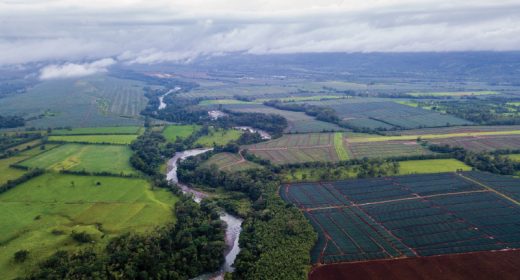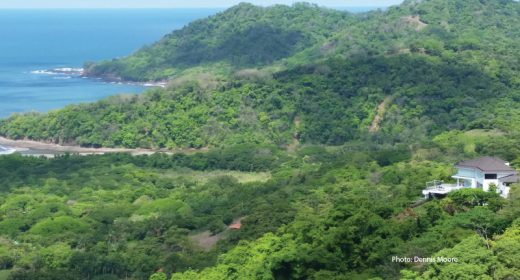
Environment – Patching Holes in the High Road
- APR 04, 2017Warning: count(): Parameter must be an array or an object that implements Countable in /home/howlermag/public_html/old/wp-content/themes/new-paper/includes/general.php on line 193

Your Lead Paragrpah goes here
I think that I shall never see. A poem lovely as a tree. Joyce Kilmer.
Hard to imagine a troop of Howler monkeys finding fault with those words. In fact, the hustle bustle, aerial acrobatics and plenty of noisy vocalizations around my casita during the last few hours could be considered as solid proof.
Twenty some years ago, as my construction project dragged on, a neighbor Pedro took the time to show me a waist high sapling, just steps away from the porch. He patiently explained that it was an almendro del monte, that it stayed green all dry season and that it would provide welcome shade for my home in the future. His words of wisdom have been paying double dividends for quite some time.
As it turns out, the almendro del monte does stay green in the scorching veranos of Guanacaste, but first it drops all its leaves. The new growth is magenta colored and is highly favored as a food source by our arboreal amigos the Howler monkeys. My local troop returns time after time for more than a month as the tree continues to send out new shoots and fills in the canopy in the nick of time to help me chill out on the hottest days of the year.
Apart from Pedro’s timely advice, with a bit of luck and partly by planning, over the years I’ve managed to provide the Howlers with a mix of structural support for their aerial migrations and food sources that ripen at different times as the summer progresses.
Many folks know that the brilliant yellow flowers of the corteza amarilla tree, which will soon be blooming all over the hills around us, are another favorite snack for the Howlers. As luck would have it, there was one already established not far from my kitchen window. To fill the gap in the aerial highway between the two food sources, I planted live stakes of a number of the trees that are commonly used for living fences, and threw in a couple posts of moringa and Mayan tree spinach as an afterthought. Bingo, within a couple of years the monkeys had their highway and I discovered that they also savor the tree spinach which is easy to plant from stakes and a fast grower.
To round out the circular smorgasbord surrounding my home, my son planted a guaba—also known as ice cream bean—off to the other side and I plopped in a couple of cashew trees at the back. It is worth mentioning that when the guaba is in bloom it is also a source of abundant nectar and attracts hundreds of butterflies and hummingbirds. The cashew apple fruits seem to be a real thirst quencher for the Howlers in late March and April. They’ll spend hours guzzling the astringent juices and conveniently let the seeds fall to the ground for collection and toasting for human consumption.
Full disclosure: If you’re dedicated to providing the monkeys with fairly contiguous aerial habitat and food sources, you can say adios to any number of the fruits that you had planned on harvesting. Hey, like they say, it’s a tradeoff. In my case, I’ve traded off hundreds of caimitos per year, the leafy tops of my papaya trees get munched down to the nubbin and, depending on the variety, the mango harvest can be severely impacted. Contrary to popular wisdom however, they never touch the bananas, and citrus also seems to be off the monkeys menu.
There are times when I suspect that the Howlers are happier with my farming efforts than I am. All the same, they’re a joy to behold and a bona fide highlight for visitors from overseas. In my case, any success has been a result of luck and trial and error. Fortunately, in our area, for more than ten years, the folks at salvemonos.org have invested the energy and accumulated the expertise to help the Howlers stay safe and sound in their arboreal domain.









